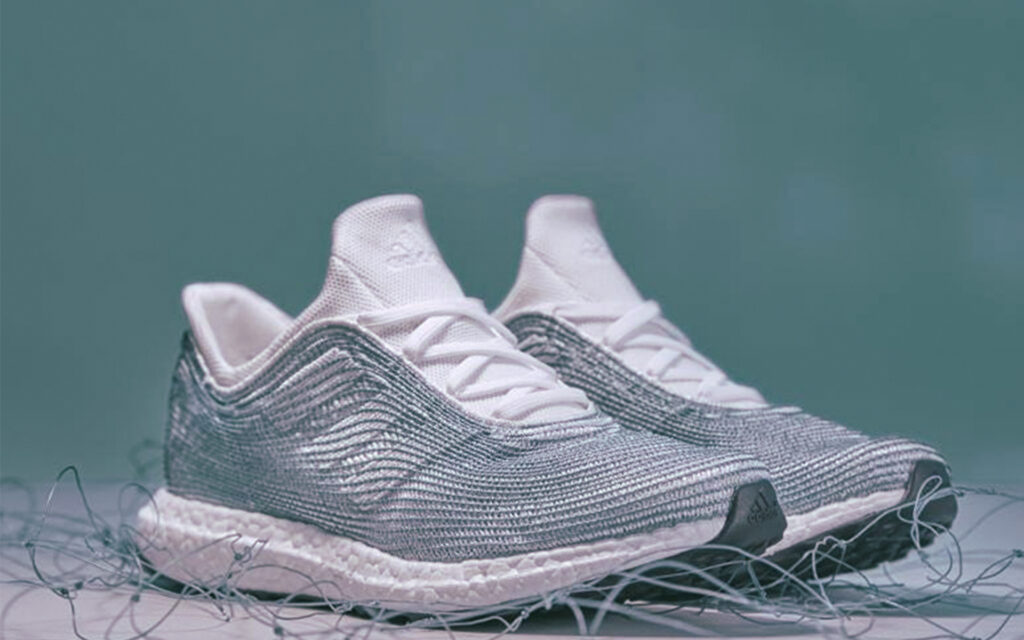Almost ten years ago, the collapse of a building in Dhaka, Bangladesh, caused an eye-opening outrage in the fashion industry. The Rana Plaza building housed five garment factories and killed at least 1,134 people. For the first time in history, it put a spotlight on the supply chain practices of global retailers. To provide low-cost clothing options for a fast-moving global supply chain, large retailers worked with suppliers who relied on subcontractors. These subcontractors often lacked safe working conditions and violated human rights to save costs. Following the biggest disasters in the fast-fashion industry, increased awareness for sustainable fashion practices has become essential for consumers and retailers alike.
Companies are making their supply chains more transparent
Technologies address many of these challenges. For instance, by making supply chains more digital and thus, more transparent.
Blockchain is one such technology that guarantees transparency and traceability throughout the supply chain. Blockchain is an unalterable and decentralised chain of information blocks that stores secure and transparent data. In the fashion industry, it ensures that materials are ethically sourced and labour practices are fair.
Companies like Provenance are among the many companies that have since jumped on the blockchain bandwagon. The Stella McCartney brand uses blockchain technology to trace the origins of the wool used in its products. Customers can track their garments from the source of production to the point of sale. Thereby, helping to build trust and confidence in their products. A pioneer in sustainable luxury, they also track the environmental and social impact of each stage of production. In 2021, the brand estimated its impact on the environment was €3.1 million, mainly from greenhouse gas emissions. This level of transparency enables brands to showcase their commitment to sustainability and also helps consumers make more informed choices about the products they buy.

Consumers are becoming more aware as information on sustainable fashion becomes easily accessible
As early as the 2010s, mobile applications promoted sustainable fashion practices, such as swapping and sharing clothing, repairing and repurposing clothes, and choosing sustainable brands. Mobile applications and online platforms like Vinted or Depop facilitate second-hand shopping, while Re-Fashion and Good On You educate consumers about sustainable fashion choices. Re-Fashion is an online marketplace for sustainable fashion that provides additional information on the materials and practices used by the brands featured on their platform. Good On You rates brands on their sustainability practices, helping consumers make more informed purchasing decisions. Consumer awareness is crucial to hold global retailers accountable for their sustainable practices.

Technology enables the production of sustainable material
Throughout history, technology contributed to significant advancements in the fashion industry. In the mid-20th century, the material became cheaper and more durable than natural fibres, and their production required less water and energy. While this practice is now being called into question, technology continues to revolutionise the materials relied upon by the industry.
It enables the production of sustainable materials such as recycled polyester, organic cotton, and biodegradable textiles. The benefits of the latter and also of natural dyes are that they can break down naturally without releasing harmful chemicals into the environment. Companies like Evrnu and Renewcell use chemical recycling and enzymatic processes to break down and regenerate textiles, creating new clothes and accessories from recycled materials. Similarly, 3D printing can transform waste materials into recycled polyester.
Adidas used 3D printing technology to create a prototype shoe made from recycled ocean plastic and 3D-printed midsoles. The shoe is part of Adidas’ commitment to sustainability and reducing waste in the fashion industry.

Digital printing technologies are making manufacturing processes more efficient
Beyond digital printing technologies upcycling waste materials, they enable manufacturers to produce clothing and accessories with minimal water usage and chemical waste. Designers can also create more customised products, further reducing the amount of material and energy used during production. Fabric patterns and designs can be printed directly onto the fabric without additional dyeing or printing processes.
Danish fashion brand, Son of a Tailor, has created a 3D knitting machine that can create custom-fitted garments using recycled yarns. This way the brand creates garments on demand and avoids overproduction.
Dutch designer Iris van Herpen creates outfits at the intersection of design and technology. At this year’s Paris Fashion Week, she revealed a 3D-printed haute couture dress made entirely from a vegan organic material based on cocoa bean shells.

Technologies will be crucial to meet the growing demand for sustainable fashion
Technology is implemented across various stages, from production and supply chain to informing and educating consumers. By leveraging technology, the industry can reduce its environmental impact, promote ethical practices, and meet the growing demand for sustainable fashion. A report by consultancy Bain & Company and WWF Italy found that 15% of fashion consumers are already concerned about sustainability with that number expected to increase up to 50% in the upcoming years.
The time is now for brands to take action on sustainability – they’ll not only benefit from enhanced resilience but will have incredible opportunity to build brand loyalty with increasingly conscious consumers
Payal Luthra, Global Apparel and Textiles Lead at WWF told reporters.





